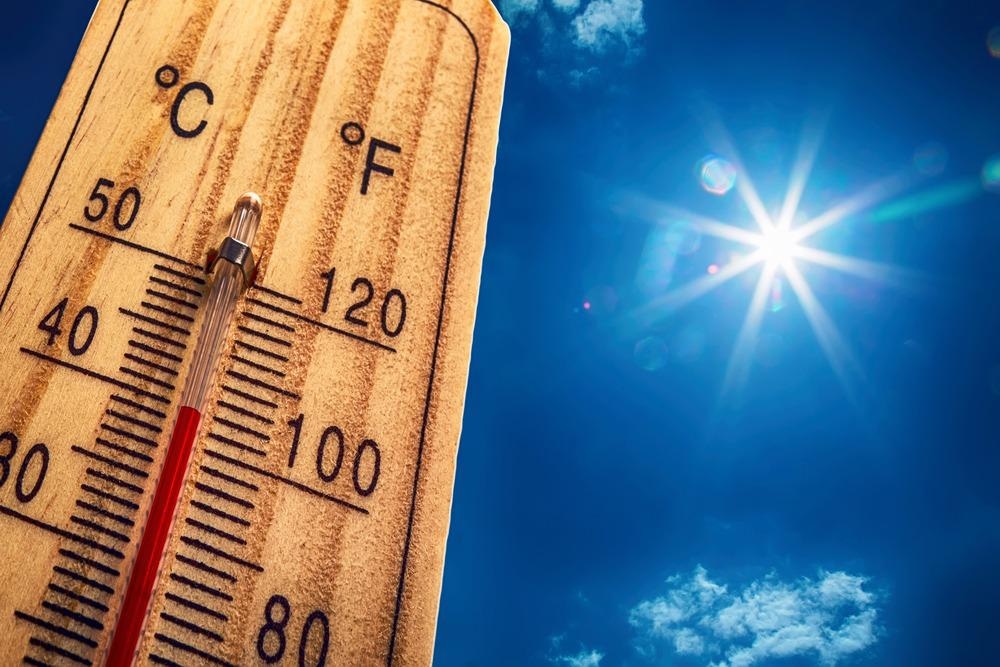The latest report of the United Nations Intergovernmental Panel on Climate Change (IPCC) directly relates the increased intensity and frequency of extreme weather events, such as heatwaves, heavy rainfall, droughts, and tropical cyclones, to the current level of global warming.

As temperature fluctuations become commonplace worldwide, conventional cooling and heating systems need more innovative and energy-efficient alternatives. New research from a team at Texas A&M University in the USA reveals a novel polymer phase-change material (PCM) that, when added to building materials by a 3D printing process, can regulate the temperature inside buildings.
The Intergovernmental Panel on Climate Change Sixth Assessment Report (2021) emphasized the unprecedented level of extreme weather events that have been observed since 1950. The data reviewed point out that temperatures have already increased by 1.1 °C since the 19th century. In the next two decades, temperatures are very likely to rise by another 1.5 °C above pre-industrial levels. According to the report, there is unequivocal evidence of a human contribution to the extreme temperature patterns, heavy rainfall events, and sea-level changes around the globe. Developing new sustainable technologies and innovative materials is an essential element of our response to climate change.

Image Credit: Marian Weyo/Shutterstock.com
Why Do We Use Phase-Change Materials?
Phase-change materials are heat storage compounds that undergo a phase transition between liquid and solid states upon a temperature change. The phase transition occurs isothermally upon melting (heat storage) or solidifying (heat recovery). During the solid-liquid phase transition, PCMs store thermal energy as latent heat of the endothermal processes involved in breaking the PCM's inter-molecular bonds. The stored heat can be released exothermally when the material is cooled back to a solid-state.
PCMs have found a wide range of applications in various industrial sectors. Such materials are used for passive thermal regulation of buildings, greenhouses, electrical machines, aircraft and spacecraft, and many others. Globally the PCM market is forecast to reach nearly 900 million USD by 2026 (up from around 400 million in 2020). New regulations aiming to reduce greenhouse gas emissions are the primary stimulus for the growing demand, as PCM can maintain internal temperatures without consuming fuel or electricity.
How Can Phase-Change Materials Help to Mitigate Climate Change?
Energy consumption associated with heating, ventilation, and air conditioning (HVAC) in built-up areas accounts for more than one-third of the total energy consumption in some countries, cited at around 20% in the EU and North America. That share is expected to rise in the future due to a combination of factors, such as extreme temperature fluctuations, increasing population, rapid economic growth, and improving quality of life. Besides, HVAC systems often rely on greenhouse refrigerants to operate, thus further contributing to global warming.
This situation pushes the world into a feedback loop, where energy demand for HVAC drives further greenhouse gas emissions, causing a global climate deterioration and demands more energy for HVAC. Finding more efficient and sustainable methods for thermal regulation of residential and industrial buildings can significantly reduce energy consumption and greenhouse gas emissions. In that respect, PCMs have shown particular potential as a passive means of achieving thermal comfort both in newly-build and existing buildings.
Low-Cost Fabrication of PCM Composites by UV 3D printing
PCMs cannot be used directly as building materials due to a lack of the necessary mechanical properties. The traditional approach involves forming compartments in the building's structure where the PCMs are contained. Combining conventional building materials with PCMs quite often proves to be a challenge, thus restricting the use of these materials in construction.
Researchers at Texas A&M University have created a novel polymer composite phase-change material that combines a light-sensitive liquid polymer with a phase-changing paraffin-based powder to overcome these challenges. Their research was published in Matter on April 12th, 2021. In the novel material, the photo-curable polymer acts as both the outer shell for the PCM and a load-bearing structural material simultaneously. The soft and malleable polymer-PCM blend is ideally suitable for ultraviolet (UV) 3D printing. Once extruded into the desired shape, the polymer PCM composite can be UV-cured into a solid structure with PCM microparticles encapsulated within the polymer matrix.
Polymer PCMs Can Combine Structural Integrity and Thermal Regulation
The Texas team led by Dr. Emily Pentzer, an associated professor at the Department of Chemistry at Texas A&M University, successfully tested a range of PCM composites with different compositions (up to 63 wt% of PCM, a much higher percentage than most materials available in the industry) and viscosity modifiers for best structural integrity and thermal regulation. As a proof of principle, the researchers created a 3D-printed model house that, when heated, maintained a 40% lower temperature inside compared to models made of conventional 3D printing polymers.
Most importantly, the 3D-printable PCM building material can be fabricated into any shape or size required for the decorative and structural parts of buildings at a much lower cost than traditional PCM building materials. Dr. Pentzer emphasizes that the possibility to incorporate the new polymer phase-change composite directly into scalable structural elements gives the construction industry unexplored opportunities to introduce passive temperature regulation in both new builds and already existing structures.

Image Credit: Kishivan/Shutterstock.com
Expanding the Energy Saving Potential of PCMs
Anticipating the future applications of the material, Dr. Pentzer's team aims to combine multiple phase change materials with different melting temperatures to broaden the material's operating temperature range. This will make the material suitable for different climate zones and increase its energy efficiency during a heating-cooling cycle. Another important aspect the researchers are addressing is improving its flame retardant properties to satisfy the construction industry requirements fully.
--
Industrial Response to Climate Change
This article is a part of the IPCC Editorial Series: Industrial Response to Climate Change, a collection of content exploring how different sectors are responding to issues highlighted within the IPCC 2018 and 2021 reports. Here, Materials showcases the research institutions, industrial organizations, and innovative technologies driving adaptive solutions to mitigate climate change.
References and Further Reading
Wei, P., Cipriani, C. EPentzer, E. B. (2021) Thermal energy regulation with 3D printed polymer-phase change material composites. Matter. 4, 6, 1975-1989. Available at: https://doi.org/10.1016/j.matt.2021.03.019
IPCC. (2018) Summary for Policymakers. Global Warming of 1.5 °C. An IPCC Special Report on the impacts of global warming of 1.5 °C above pre-industrial levels and related global greenhouse gas emission pathways, in the context of strengthening the global response to the threat of climate change, sustainable development, and efforts to eradicate poverty. Available at: https://www.ipcc.ch/
IPCC. (2021) Summary for Policymakers. Climate Change 2021: The Physical Science Basis. Contribution of Working Group I to the Sixth Assessment Report of the Intergovernmental Panel on Climate. Available at: https://www.ipcc.ch/report/ar6/wg1/downloads/report/IPCC_AR6_WGI_SPM.pdf
Al-Yasiri, Q., Szabo, M. (2021) Incorporation of phase change materials into building envelope for thermal comfort and energy saving: A comprehensive analysis. J. Build. Eng. 36, 102122. Available at: https://doi.org/10.1016/j.jobe.2020.102122
Khosla, R., et al. (2021) Cooling for sustainable development. Nat. Sustain. 4, 201–208. Available at: https://doi.org/10.1038/s41893-020-00627-w
Texas A&M University (2021) New 3D printable phase-changing composites can regulate temperatures inside buildings [Online] www.eurekalert.org Available at: https://www.eurekalert.org/news-releases/832224
UN Climate Statement (2021) UN Climate Change Welcomes IPCC's Summary for Policy Makers on the Physical Science Basis of Climate Change [Online] www.unfccc.int Available at: https://unfccc.int/news/un-climate-change-welcomes-ipcc-s-summary-for-policy-makers-on-the-physical-science-basis-of-climate
K. Mason (2018) Phase change materials: applications in the built environment [Online] www.thenbs.com Available at: https://www.thenbs.com/knowledge/phase-change-materials-applications-in-the-built-environment
Vincze, M., Borcia, I.D. and Harlander, U. (2017) Temperature fluctuations in a changing climate: an ensemble-based experimental approach. Sci. Rep. 7, 254. Available at: https://doi.org/10.1038/s41598-017-00319-
Disclaimer: The views expressed here are those of the author expressed in their private capacity and do not necessarily represent the views of AZoM.com Limited T/A AZoNetwork the owner and operator of this website. This disclaimer forms part of the Terms and conditions of use of this website.